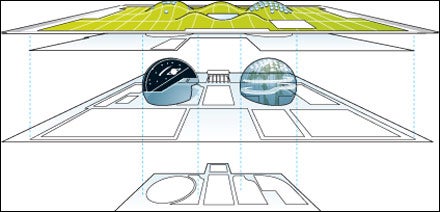IT’S BEEN NEARLY two decades since the California Academy of Sciences, in Golden Gate Park, was shaken up by the Bay Area’s 1989 earthquake. On September 27, after a decade–long capital campaign and three years of construction, the museum will reopen. Designed by Pritzker Prize–winning architect Renzo Piano, the building, with its futuristic engineering, living roof, and solar panels, has the potential to overshadow everything that goes inside it. Turns out, though, the exhibits and the scientists are every bit as impressive as their new home.
Philippine Reef
The 25–foot–deep, 212,000–gallon replica of an Indo– Pacific ecosystem is the biggest exhibit of its kind and houses more than 100 species—tremendous bio–diversity until you consider the Philippines’ total. “There’s a minimum of 10,000 marine species, and any piece of real estate the size of our tank might have 300 to 400,” says Terrence Gosliner, senior curator of invertebrate zoology and geology. Over the next few years, Gosliner plans to more than double the population in the tank to showcase a more representative cross section of nature.
Living Roof
The academy’s rolling 2.5–acre living roof—amazingly, the largest swath of native vegetation in San Francisco—is an experiment in itself. The roof is now home to 1.7 million plants, but that’s just the beginning. Senior curator of botany Frank Almeda is advising a graduate student studying its floral and faunal colonization. “We’re going to find out what shows up,” says Almeda. “No one has done a study like this on a living roof.” Already, the expanse has attracted jumping spiders, butterflies, bumblebees, and even a few red–tailed hawks.
Rainforest
The 90–foot glass dome, with free–flying birds and butterflies and mature trees, is split into four separate ecosystems: Costa Rica, Madagascar, the Amazon, and Borneo. Visitors will traverse a series of twisting concrete walkways through each of the four zones. Our favorite: The Madagascar region features the brilliant and toxic golden mantella frog. Associate curator of entomology Brian Fisher helped discover the sources of the mantella’s poison: chemicals sequestered from its prey, Tetramorium, Anochetus, and Paratrechina ants.


